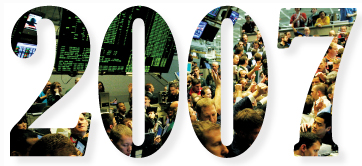Experts: Commercial Real Estate Has Returned to 2007
By Carl Gaines November 1, 2013 1:58 pm
reprints
It is hard to believe that it was just a few years ago—specifically in 2007—when a perfect storm of positive events was taking place in the financial and real estate markets. The S&P 500 reached record highs, CMBS transactions grew to nearly $770 billion, the Blackstone Group completed its $39 billion purchase of Equity Office Properties Trust and then sold eight buildings in the Equity Office portfolio to Harry Macklowe for $7 billion, foreign investors were purchasing commercial real estate at record levels and everyone was purchasing residential condominiums. In short, happy days were here again.
 Suddenly, though, the music stopped and a financial crisis descended upon the nation as well as the residential and commercial real estate market in New York and elsewhere. It began in 2008 and reached its full impact in 2009. The climb out of it has been slow, but this year many consider the real estate market similar, or even better, than those distant days of 2007.
Suddenly, though, the music stopped and a financial crisis descended upon the nation as well as the residential and commercial real estate market in New York and elsewhere. It began in 2008 and reached its full impact in 2009. The climb out of it has been slow, but this year many consider the real estate market similar, or even better, than those distant days of 2007.
This year, the price of raw land for development is reaching record highs, along with residential rents and luxury condominium price tags. Vacancy rates for office in Midtown South (once considered a second rate location) are at all time lows, with the highest recorded rents. Investors are once again converting office buildings, especially in prime locations, into residential rental and condominium towers with hotel components. The level of financing for commercial real estate is growing each and every day. And this includes a major volume increase in CMBS. Construction financing has rebounded and mezzanine and preferred equity are being offered at lower, reasonable pricing. More and more hotels are opening in the metropolitan market with the city recording the highest occupancy rates ever.
While it looks like the stars are aligned for the days of 2007, industry leaders are not all in agreement that the market has totally improved.
“While cap rates for investment properties in New York City have certainly compressed, our data shows that cap rates, particularly in the multi-family sector are not as low as they were in 2007,” said Robert Knakal, chairman of Massey Knakal Realty Services. “The significance of this becomes magnified when looking at what lending rates and Treasury rates were in 2007. Basically, investors are getting a much better bargain today than they were in 2007.”
Peter Hauspurg, chairman of Eastern Consolidated, has a different view on the multifamily marketplace. “Rental apartment pricing is nearly double 2007,” Mr. Hauspurg told Mortgage Observer. “Rental housing is on fire, especially in Brooklyn, which continues to surprise all real estate leaders. There is almost no neighborhood that is not gentrifying: including areas like Bed-Stuy, Flatbush, Bushwick and even Coney Island.”


